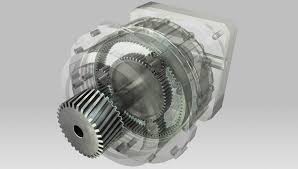Mobile:+86-311-808-126-83
Email:info@ydcastings.com
A Comprehensive Guide to Various Types of Impeller Pumps for Different Applications
Understanding Impeller Pump Types
Impeller pumps are a vital component in various industries, serving a wide array of applications ranging from water supply systems to industrial processes. These pumps operate based on the principle of converting rotational energy into hydrodynamic energy, making them highly efficient for transporting fluids. In this article, we will explore the different types of impeller pumps, their mechanisms, and their applications.
1. Centrifugal Pumps
Centrifugal pumps are the most common type of impeller pump. They consist of a rotating impeller that draws fluid in through the eye and expels it radially through a volute or diffuser, thus increasing the fluid’s pressure and velocity. Centrifugal pumps are ideal for low-viscosity fluids and are widely used in agricultural irrigation, water treatment, and dewatering applications. They are known for their simplicity and ease of maintenance, making them a preferred choice in many scenarios.
2
. Mixed Flow PumpsMixed flow pumps combine the principles of centrifugal and axial flow pumps. The impeller's design allows fluid to be drawn in axially and expelled radially, which provides a balanced flow and allows for higher head capabilities than purely centrifugal designs. These pumps are ideal for applications requiring moderate to high flow rates while maintaining energy efficiency. Common uses include municipal water supply systems, HVAC systems, and industrial processes that require significant flow with lower pressure.
3. Axial Flow Pumps
impeller pump types

Axial flow pumps are characterized by their impeller design, which allows fluid to flow parallel to the pump shaft. The blades of the impeller push the fluid in a straight line, generating high flow rates but lower pressures compared to centrifugal pumps. These pumps are particularly effective in situations where large volumes of fluid must be moved over short distances. They are commonly used in applications such as flood control, irrigation, and cooling water circulation.
4. Propeller Pumps
Propeller pumps are a subtype of axial flow pumps that use a propeller-like impeller to move fluids. They are highly efficient at handling large volumes of water and are often used in applications such as irrigation systems, ballast water management, and wastewater treatment. Propeller pumps are particularly suited for low-head applications, where the emphasis is on volume over pressure.
5. Multistage Pumps
Multistage pumps are designed with multiple impellers stacked in series, allowing them to achieve higher pressures. These pumps are particularly useful in applications where significant vertical lift is required, such as in deep well pumping or high-rise building supply systems. Multistage pumps can be centrifugal or axial in design, and their versatility makes them suitable for a wide range of applications in various industries.
Conclusion
Each type of impeller pump has unique characteristics that make it suitable for different applications. Centrifugal pumps dominate the market due to their versatility and ease of use, while mixed flow and axial flow pumps offer advantages in specific scenarios requiring high flow rates. Propeller pumps are ideal for low-head applications, and multistage pumps excel in high-pressure situations. Understanding the various types of impeller pumps is crucial for selecting the right pump for your specific needs, ensuring efficiency and reliability in fluid transport operations. With the proper knowledge, industries can optimize their systems, reduce energy costs, and enhance overall performance.
-
Understanding Metal Casting TechniquesNewsApr.02,2025
-
Understanding Exhaust Manifolds for Enhanced Engine PerformanceNewsApr.02,2025
-
The World of Metal FabricationNewsApr.02,2025
-
Key Components for Pump and Turbo EfficiencyNewsApr.02,2025
-
Essential Tools for Automotive Maintenance and RepairNewsApr.02,2025
-
Durable Valve Components for Effective Water ManagementNewsApr.02,2025











